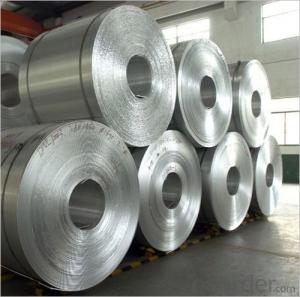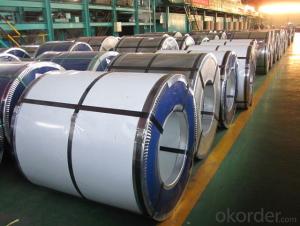040 Aluminum Coil Stock
040 Aluminum Coil Stock Related Searches
Led Light Bulbs For Ceiling Fixtures Led Lamps For Ceiling 42 In Ceiling Fan With Light Aluminum Coil Stock For Gutters Aluminum Foil For The Grill Hole Saw For Aluminum Plate Aluminum Tread Plate For Trailer Bow Plate For Aluminum Boat Aluminum Foil For Grow Room Aluminum Foil For Joint PainHot Searches
Stock Price For Aluminum Aluminum Coil Stock For Sale Aluminum Gutter Coil For Sale Used Aluminum Scaffolding For Sale 1/4 Aluminum Plate For Sale Aluminum Bar Stock For Sale Aluminum Round Stock For Sale Aluminum Diamond Plate For Sale Aluminum Scaffolding For Sale Craigslist 6061 Aluminum Plate For Sale Aluminum Dock Plate For Sale 7075 Aluminum Plate For Sale Aluminum Tread Plate For Sale Aluminum Checker Plate For Sale Aluminum Plate For Sale Near Me Plate Aluminum For Sale Aluminum Plate For Sale Aluminum Square Stock For Sale Aluminum Flat Stock For Sale Billet Aluminum Stock For Sale040 Aluminum Coil Stock Supplier & Manufacturer from China
Okorder.com is a professional 040 Aluminum Coil Stock supplier & manufacturer, offers integrated one-stop services including real-time quoting and online cargo tracking. We are funded by CNBM Group, a Fortune 500 enterprise and the largest 040 Aluminum Coil Stock firm in China.Hot Products
FAQ
- If you were to make something from each of these.which is more expensive? aluminum or carbon fiber ?which is stronger?What would the advantages or disadvantages of each be?
- CF is always more expensive - mostly because of production costs. Aluminum can be bent, machined, and extruded - all relatively cheap processes. CF has to be molded and typically requires a long cure time - so, slow and expensive. CF has higher strength to weight ratio - so if you're building an airplane or other thing where weight is critical... But, the strength thing is really complicated - how far does either deflect under a given load? And is deflection a good thing as in, say, a carbon fiber fly rod. At the deflection limit what happens? Aluminum takes a permanent bend, carbon fiber shatters. An aluminum car fender given a small bump will dent - a carbon fiber one will bounce back without a scratch. Given a larger bump the aluminum will dent more and the carbon fiber one will shatter. And while we're talking about bending - aluminum will 'cold work' - that is if you bend it back and forth and back and forth a zillion times first it becomes harder, then more brittle, then it breaks. Carbon fiber designs can be made to flex repetitively for much longer. Then there's heat issues. Aluminum can take a lot of heat. CF is actually 'composite construction' where some plastic (polyester resin, epoxy resin, etc) is required to bind the fibers together. All of these resins have different chractersitics when heated, but most of them have a Tg (temp at which they start to deform) of maybe 250 F or, for some hgih end epoxy resins, maybe 400 F - epoxy that can handle higher heat than that gets both expensive and difficult/dangerous to work with. So, carbon fiber leadin edges on the wing of an airplane that is designed to go supersonic might not be such a good idea. There's definitely no simple answer to this question.
- Yes, aluminum coils can be customized and fabricated into specific shapes through processes such as bending, cutting, and forming.
- Yes, there are limitations to the widths of aluminum coils. The width of aluminum coils is typically determined by various factors such as the manufacturing process, equipment capabilities, and industry standards. One limitation is the maximum width that the manufacturing equipment can handle. Coil processing machines have specific width capacities, which generally range from a few inches to several feet. If an aluminum coil exceeds the maximum width that the machine can accommodate, it may not be possible to process it. Another limitation is related to transportation and handling. Aluminum coils that are too wide may not fit within standard shipping containers or may be difficult to maneuver during transportation. Additionally, wide coils may require specialized handling equipment or additional support, which can increase costs and logistical challenges. Industry standards and application requirements also play a role in determining the limitations of aluminum coil widths. Different industries and applications have specific width requirements for their products. For example, the construction industry may have specific width specifications for roofing or cladding materials, while the automotive industry may have different requirements for body panels. Manufacturers need to consider these standards and customer needs when determining the maximum and minimum widths of aluminum coils. In summary, while aluminum coils can be produced in various widths, there are limitations due to manufacturing equipment capabilities, transportation constraints, and industry standards. These limitations must be considered to ensure the efficient production, handling, and utilization of aluminum coils in different applications.
- There are several different alloys commonly used in aluminum coils, each with its own unique properties and applications. Some of the most frequently used alloys include: 1. 3003: This alloy is known for its excellent formability and corrosion resistance. It is often used in applications that require moderate strength, such as automotive parts, storage tanks, and kitchen utensils. 2. 5052: This alloy is highly versatile and offers good corrosion resistance, high fatigue strength, and excellent weldability. It is commonly used in the manufacturing of aircraft fuel tanks, marine components, and architectural applications. 3. 6061: Known for its high strength and excellent machinability, 6061 is often used in structural components, such as frames and braces. It also offers good corrosion resistance and is commonly used in the aerospace and automotive industries. 4. 8011: This alloy is primarily used in the packaging industry, especially for making aluminum foil. It offers good formability, high tensile strength, and excellent resistance to moisture and chemicals. 5. 1100: This is a commercially pure aluminum alloy, known for its high electrical conductivity and good thermal conductivity. It is commonly used in electrical wiring, heat exchangers, and lighting fixtures. These are just a few examples of the alloys used in aluminum coils, and there are many other variations available to suit specific needs and applications. The choice of alloy depends on factors such as desired strength, corrosion resistance, formability, and cost considerations.
- Aluminum coils are typically tested for surface cleanliness using various methods such as visual inspection, solvent wipe tests, and surface roughness measurements. Visual inspection involves examining the surface of the coil for any visible contaminants or defects. Solvent wipe tests involve wiping the surface with a solvent-soaked cloth to check for any residue or contaminants that may be present. Surface roughness measurements are taken using specialized instruments to assess the smoothness of the coil's surface, which can indirectly indicate its cleanliness. These testing methods help ensure that aluminum coils meet the required standards and are free from any surface contaminants.
- The common sizes and dimensions of aluminum coils can vary based on the specific industry and application. However, there are some commonly used dimensions that are found across various industries. In the building and construction industry, aluminum coils are often available in widths ranging from 24 inches (609.6 mm) to 60 inches (1524 mm). The thickness of these coils can range from 0.019 inches (0.48 mm) to 0.032 inches (0.81 mm), although thicker gauges may also be available for specialized applications. For the transportation industry, especially in the manufacturing of automobiles and aircraft, aluminum coils are typically wider and thicker. Widths can range from 48 inches (1219.2 mm) to 72 inches (1828.8 mm), and thicknesses can vary from 0.035 inches (0.89 mm) to 0.125 inches (3.18 mm). In the food and beverage industry, where aluminum is commonly used for packaging purposes, the dimensions of aluminum coils can be smaller. Widths can range from 12 inches (304.8 mm) to 24 inches (609.6 mm), and thicknesses are usually around 0.006 inches (0.15 mm) to 0.020 inches (0.51 mm). It is important to note that these dimensions are not exhaustive and can vary depending on the manufacturer and specific requirements of the application. Therefore, it is always recommended to consult with suppliers or manufacturers to determine the most suitable sizes and dimensions for your specific needs.
- Aluminum coils are processed and fabricated through a series of steps to shape them into desired forms for various applications. The process typically involves the following steps: 1. Coil Manufacturing: Aluminum coils are initially manufactured by melting aluminum ingots and casting them into large, flat coils. These coils are then rolled through a series of rolling mills to achieve the desired thickness and shape. 2. Coil Cleaning: Once the coils are rolled, they undergo a cleaning process to remove any dirt, oil, or other impurities that may have accumulated during manufacturing. This is typically done using chemical cleaning agents or mechanical scrubbing techniques. 3. Coil Annealing: Annealing is a heat treatment process where the coils are heated to a specific temperature and then slowly cooled. This process helps to relieve internal stresses, improve the coil's mechanical properties, and enhance its formability. 4. Coil Slitting: In this step, the large coils are cut into narrower strips or sheets of desired widths. This is done using a slitting machine, which can cut multiple strips simultaneously. Slitting allows for better utilization of the material and ensures that the coils are in the required dimensions for further processing. 5. Coil Surface Treatment: Aluminum coils often undergo surface treatments to enhance their appearance, improve corrosion resistance, or provide additional protection. Common surface treatments include anodizing, painting, or applying a protective coating. 6. Coil Fabrication: Once the coils are cleaned, annealed, and treated, they can be further processed into various shapes and forms. Common fabrication techniques include stamping, bending, deep drawing, roll forming, welding, and machining. These processes allow the aluminum coils to be transformed into components such as sheets, plates, tubes, profiles, or intricate designs. 7. Quality Control: Throughout the entire processing and fabrication stages, strict quality control measures are implemented to ensure that the final products meet the required specifications and standards. This involves regular inspections, testing for mechanical properties, dimensional accuracy, surface quality, and other relevant parameters. Overall, the processing and fabrication of aluminum coils involve a combination of metallurgical, mechanical, and chemical processes to achieve the desired final product. These processes aim to enhance the properties of the aluminum, improve its formability, and create a wide range of products for various industries such as automotive, construction, aerospace, and packaging.
- I was told today that taking aluminium inside your body greatly increases the chance of getting alzheimers as they destroy cells. Is this true?If so, then what foods contain aluminium?Thanks in advance :)
- complex aspect. research using the search engines. it can assist!











































